Dosukoi Beach Clean 2018Sumo wrestlers join local volunteers in beach cleanup
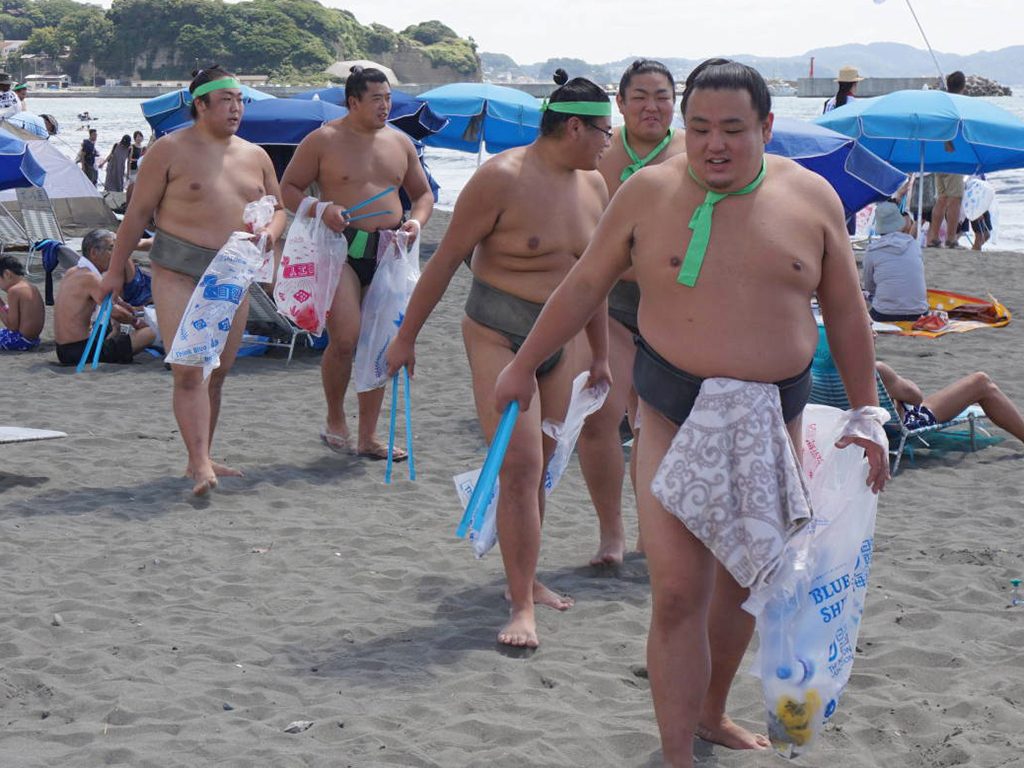
Umisakura, an NGO that is working to maintain safe, clean beaches, has been holding monthly beach cleanups in Enoshima, Kanagawa Prefecture, since 2005 under the slogan “Japan’s most enjoyable beach cleanup!” For the past four years, with support from The Nippon Foundation, the group has held large events with the cooperation of sumo heya (also beya; stables – groups of rikishi (wrestlers) that train and live together under a stablemaster) and participation from the general public. Called “Dosukoi Beach Clean,” using a term of encouragement from the sumo world, this year’s event was held on August 18 at Enoshima Eastside Beach, with roughly 600 people participating.
In the previous two years, Dosukoi Beach Clean were held in multiple locations over several weeks, with a different heya participating in each event. This year, the event was held once, in Enoshima, with four heya participating. The rikishi from each heya led a team designated by the color – yellow, green, blue, or red – and when participants signed in they were assigned to one of the teams. At the end of the event, the team that collected the most trash would be declared the winner. The participating heya were: Otake Beya (yellow); Shikoroyama Beya (green); Onomatsu Beya (blue); and Chiganoura Beya (red).
Registration began at 9:30 in the morning, with long lines forming on the beach as participants waited to sign in. At 10:00, Junichiro Furusawa, Umisakura’s chief director, took the stage joined by the four oyakata (stablemasters) to welcome the participants and explain the program. In addition to picking up trash, a demonstration of sumo training exercises would be given, and participants would be invited to try their hand at sumo against one of the rikishi.
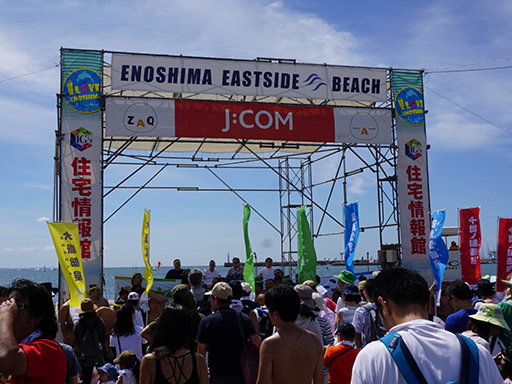
Mr. Furusawa explained the history of Umisakura’s beach cleanup activities, noting that 70% of the trash found on beaches is brought from outside, and as this is washed into the ocean it is eaten by fish, which are then consumed by humans.
The four stablemasters then each made brief remarks. Shikoroyama Oyakata (stablemaster of the Shikoroyama Beya) challenged his rikishi, telling them that they would lose their Sunday holiday the next day if they failed to win first prize, and other stablemasters repeated that challenge to their rikishi. Chiganoura Oyakata noted that he is a native of Kanagawa Prefecture and was looking forward to participating in this event at Enoshima beach, a place that holds fond memories going back to his childhood.
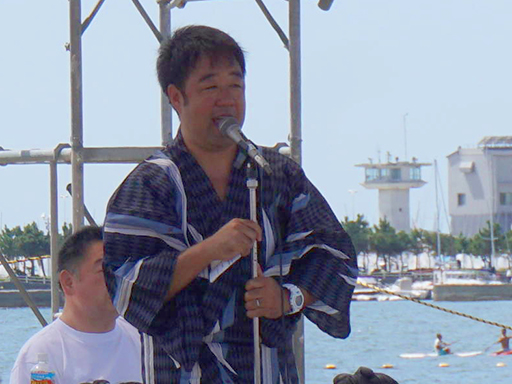
The rikishi, oyakata, and participants, who had each been given two trash bags (red for non-burnable and blue for burnable trash) and a pair of tongs, then fanned out across the beach and collected trash for roughly 30 minutes. When they returned, the trash they collected was placed in front of the stage by the rikishi of the respective teams.
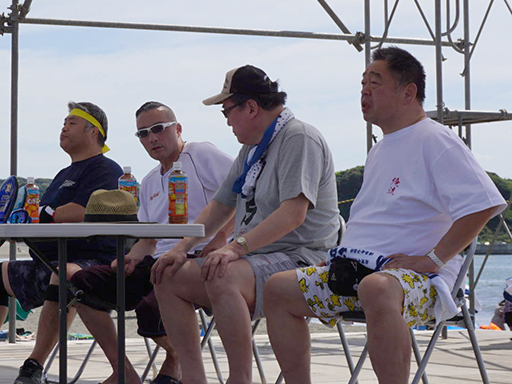
Next, Otake Oyakata, with two rikishi on stage and others spread out among the participants, demonstrated warm-up exercises that rikishi perform as part of their daily training. Participants attempted to perform the exercises themselves, and were impressed by the agility and flexibility of the rikishi.
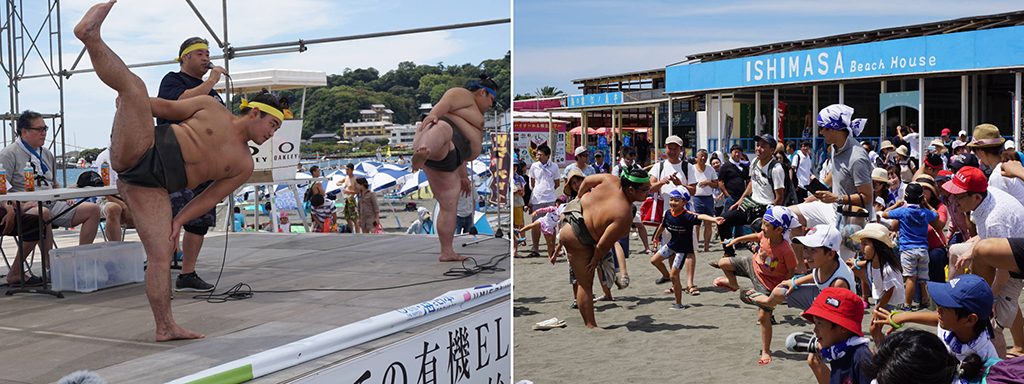
After warming up, the rikishi and participants moved to a less crowded area on the beach to experience sumo firsthand. After sifting the sand to remove any small, sharp objects, four circles were drawn to represent the sumo dohyo (ring), and children took turns facing off against the rikishi.
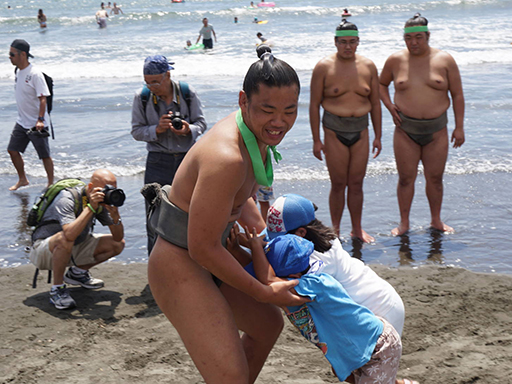
Everyone then returned to the stage area for the announcement of the winning team. Before announcing the winner, Mr. Furusawa pointed out that although the beach did not appear to have a lot of trash when the participants arrived, they collected a total of 128 bags in just 30 minutes. The results were then announced and each oyakata was presented with a plaque (from fourth place to first): Otake Beya; Chiganoura Beya; Onomatsu Beya; and Shikoroyama Beya.
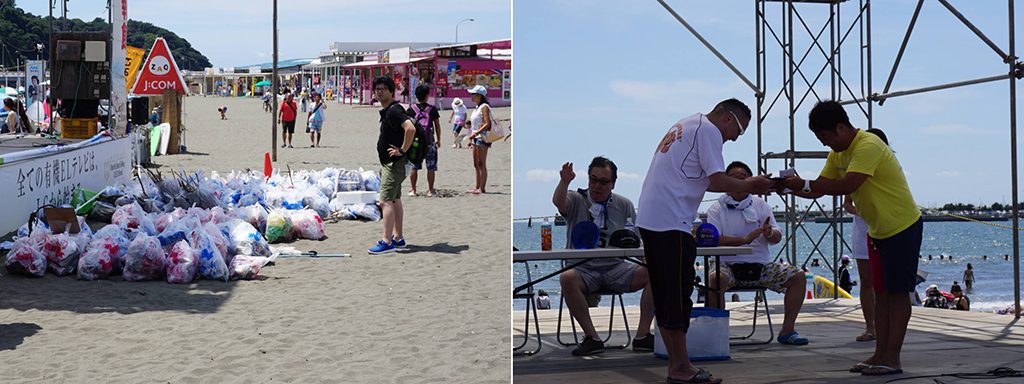
Finally, at noon, everyone gathered for a commemorative photograph, to shouts of “Dosukoi!” led by the stablemasters.
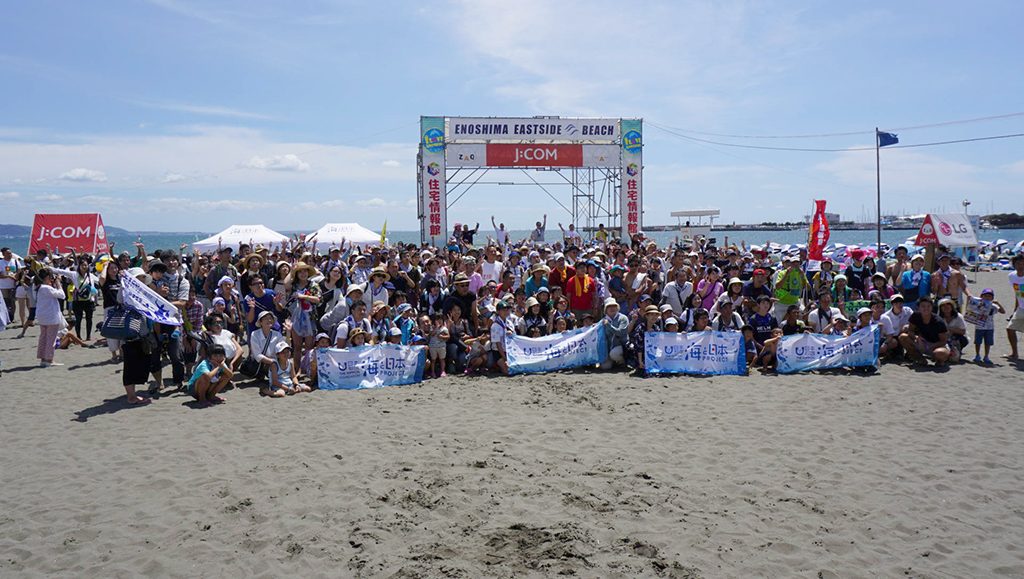
Asked about this year’s event, Mr. Furusawa noted that Dosukoi Beach Clean began four years ago with Otake Beya, and expanded to three and then five heya the following two years, with each heya participating in a separate event. This year, bringing four heya together for one event added a new dimension, with a sense of team rivalry among the heya and comradery between the participants and the rikishi of each team. This created a lively atmosphere, especially for the children, that was evident with the energetic shouts of “Dosukoi!” as the event concluded.
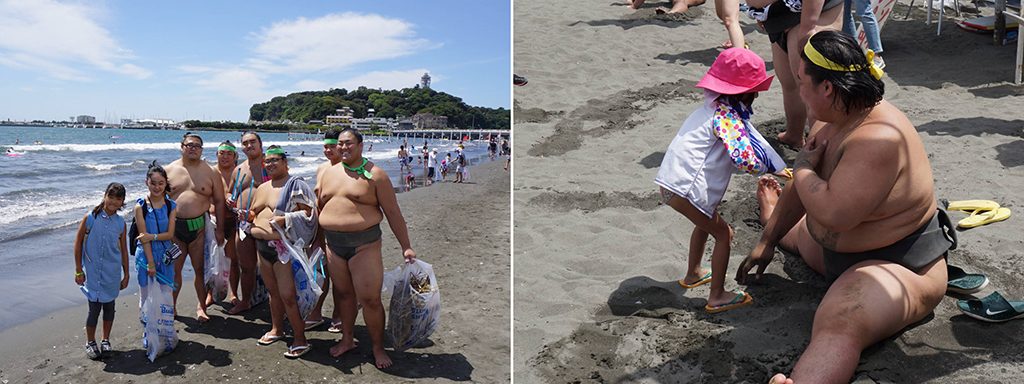
In addition to beach cleanups, Umisakura holds other ocean-themed events throughout the year, and The Nippon Foundation’s support for Umisakura has also been used to build a “Kugi-no-Nai Umi-no-Ie” (beach house built without nails) since last year. This year, the Foundation also supported the building of a “Chibikko Beach Saver Park,” to provide a place where children can play while learning about the ocean environment. Both of these are at Enoshima Eastside Beach as well.
Dosukoi Beach Clean, the Kugi-no-Nai beach house, and Chibikko Beach Saver Park are part of The Nippon Foundation’s Umi-to-Nippon Project (The Ocean and Japan Project), a joint project being undertaken nationwide by the Cabinet Office’s Headquarters for Ocean Policy, the Ministry of Land, Infrastructure, Transport and Tourism, and The Nippon Foundation. The project seeks to bring attention to the current state of the ocean, including environmental degradation and other crises, and especially to deepen the understanding of and interest in the ocean by the young people of the next generation.
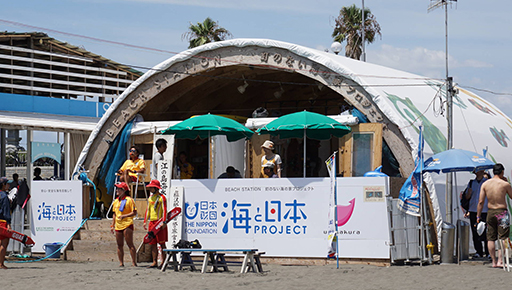
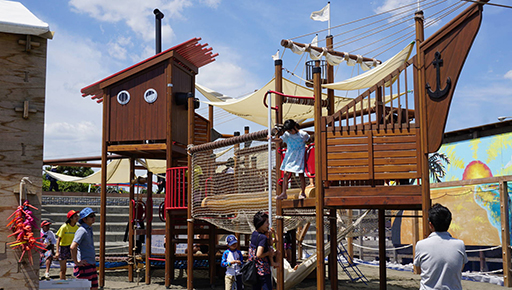
Related News
Contact
Communications Department
The Nippon Foundation
- E-mail:cc@ps.nippon-foundation.or.jp



